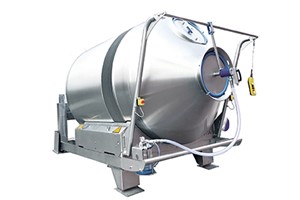In a recent study published in the Journal of the Academy of Nutrition and Dietetics, researchers explore the potential adverse health effects on children due to the use of industrial additives in processed food.
The health effects of processed food
Previous studies have linked ultra-processed food (UPF) consumption to negative health outcomes, further reinforcing the existing negative perception of industrially processed food.
Consuming industrially processed food has been associated with adverse health effects; however, these reports are only correlational and do not prove causation. Thus, further research is needed to determine whether various processing methods that remove fiber from grains, incorporate high sugar, fat, and salt concentrations, or include additives with detailed technical purposes are responsible for the associated health hazards.
To date, studies investigating the impact of processing techniques on obesity have only focused on added fat, sugar, and salt.
Tools for assessing UPF intake
Studies investigating the link between UPF consumption and negative health effects initially used dietary recall and food frequency questionnaires (FFQs) to assess individuals' eating habits. These tools can identify the types and amounts of food consumed by people.
The NOVA system is another tool that can categorize foods into four groups based on their perceived level of industrial processing. This tool aids in identifying UPFs by providing a vague description of additives and processed ingredients not commonly used in home cooking.
United States food labels mandate the disclosure of added sugar, salt, fat, and fiber content. However, the U.S. Food and Drug Administration (FDA) labeling of Nutrition Facts and ingredients list offers insufficient information on additives for consumers to make informed decisions. As a result, population exposure estimates with respect to food additives can be calculated using dietary intake surveys.
Recent findings
A previous study discovered that certain food categories have the highest usage of food additives approved for industrial food processing through the use of a unique method to track changes in food additive exposure over time, which allowed for exposure estimates in susceptible populations of children and infants. The new approach has yielded significant results in identifying potential additives that may cause adverse health effects in individuals who consume high UPF.
Notably, purchased products were related to their nutrient composition and ingredient information through scanned Nutrition Facts labels and ingredient lists. This was performed using commercial food product databases that included relevant information from the year when the product was purchased. Purchased food products were categorized into major and minor food groups by registered dietitian nutritionists, which allowed for a more objective assignment of the foods to respective NOVA groups.
The purchase of baby food products with additives has significantly increased over the past 20 years, which is particularly concerning for those worried about the potential risks associated with industrially processed baby foods. In addition, children may be more vulnerable to the toxic effects of food additives due to their lower body weight than adults.
In the current study, the authors proposed a method for determining food additive exposure in certain foods using bought products and retail brand label information. This approach can aid in researching the safety of using food additives in susceptible populations.
A systematic review has been conducted on the impacts of additive consumption on children's health, specifically focusing on the functional class of additives known as colors. Some of the observed health effects included attention-deficit/hyperactivity disorder, urticaria, rhinitis, and angioedema. However, the health effects noted in the reviews on color additives could not be linked definitively to mechanistic attributes associated with some color additives.
Some additives are currently approved for all four functional classes, thus indicating that not all additives in these classes are linked to negative health effects. Additionally, additives belonging to a functional class may vary in their chemical characteristics or physiological effects.
Conclusions
The safety of food processing and identification of questionable additives in frequently consumed UPFs are important considerations due to the increasing rates of obesity and chronic disease risks associated with high UPF intake. The use of food purchase data for U.S. household grocery stores can assist in the development of more accurate methods to estimate the safety and concentration of food additives in processed foods.
Bhavana Kunkalikar













